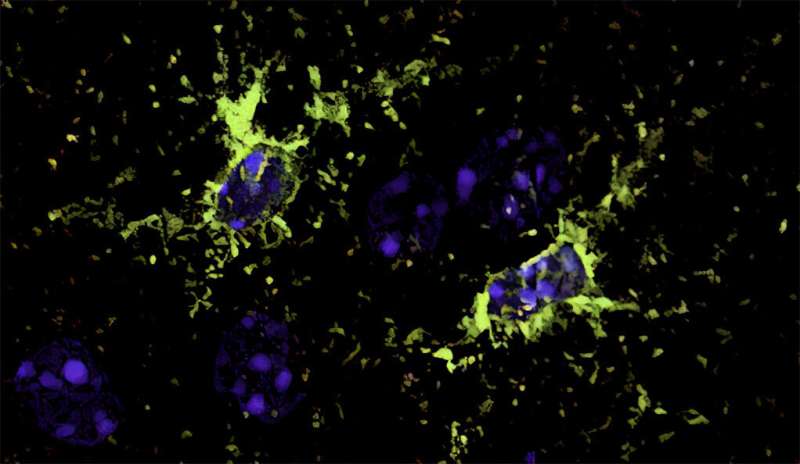Sex differences in brain cell development offer clues into disease risk

A new Yale study reveals that astrocytes, a type of glial cell found in the central nervous system, develop at different rates in male and female mice, differences that could affect how neural networks are constructed and may have implications for disease risk. The findings were published Feb. 1 in Cell Reports.
Astrocytes are known to play important roles in brain development, including building, maintaining, and pruning neuronal connections. Previous research has also shown that they respond to hormones like testosterone and estrogen. What's less clear is how this sensitivity to sex hormones might affect brain development differently in males and females.
For the study, a team co-led by Gianfilippo Coppola, a research scientist in the Department of Pathology at Yale School of Medicine, mapped gene expression profiles of astrocytes across development in both male and female mice, which allowed them to see which biological pathways were active in the cells and what processes the cells were engaged in at different points of time. The study was also co-led by Gareth Rurak, a doctoral student at Carleton University, and Natalina Salmaso, Canada Research Chair and associate professor of neuroscience at Carleton University.
"First, we saw a clear difference between young and older mice," said Coppola. Specifically, gene expression in young mice was largely associated with early developmental functions, such as the formation of neuronal connections. In older mice, gene expression patterns suggested that astrocytes were more involved in processes of brain maturation, like the pruning of neural connections.
In young mice, the researchers also observed differences between males and females in astrocyte gene expression early in development. These differences peaked one week after birth and were related to developmental phenomena such as cell growth and division, and the building of neuronal connections. This finding suggests there may also be sex differences in how astrocytes modulate neuronal networks.
These sex differences appear to be driven by astrocytes that mature at different rates. Astrocytes of male mice began to display the gene expression patterns of older mice earlier than females.
"On the surface, one might think that a faster rate of maturation is a good thing in development," said Salmaso. "However, faster maturation can also mean that males have less time to recover from environmental challenges they might encounter during this period, or that critical windows of development are potentially shorter. This may be significant for neurodevelopmental disorders."
Many neurological, psychiatric, and developmental disorders—such as schizophrenia and Rett syndrome, a rare disorder that affects motor skills and speech—affect males and females differently. Astrocyte function has been implicated in many of these diseases and this discovery of sex differences at the earliest stages of development may help researchers better understand sex differences in disease and provide new routes for treatment.
"The importance of this information is that you can now make inferences in how astrocytes are involved in disease development," said Coppola. "It also shows that neurons shouldn't be the only cells considered for targets of therapeutic intervention because they aren't the only players in how disease develops. Astrocytes are, too."
To aid in future work on this topic, the research team has created a database for the gene expression data they collected, which they made available to the scientific community.
More information: Gareth M. Rurak et al, Sex differences in developmental patterns of neocortical astroglia: A mouse translatome database, Cell Reports (2022). DOI: 10.1016/j.celrep.2022.110310





















